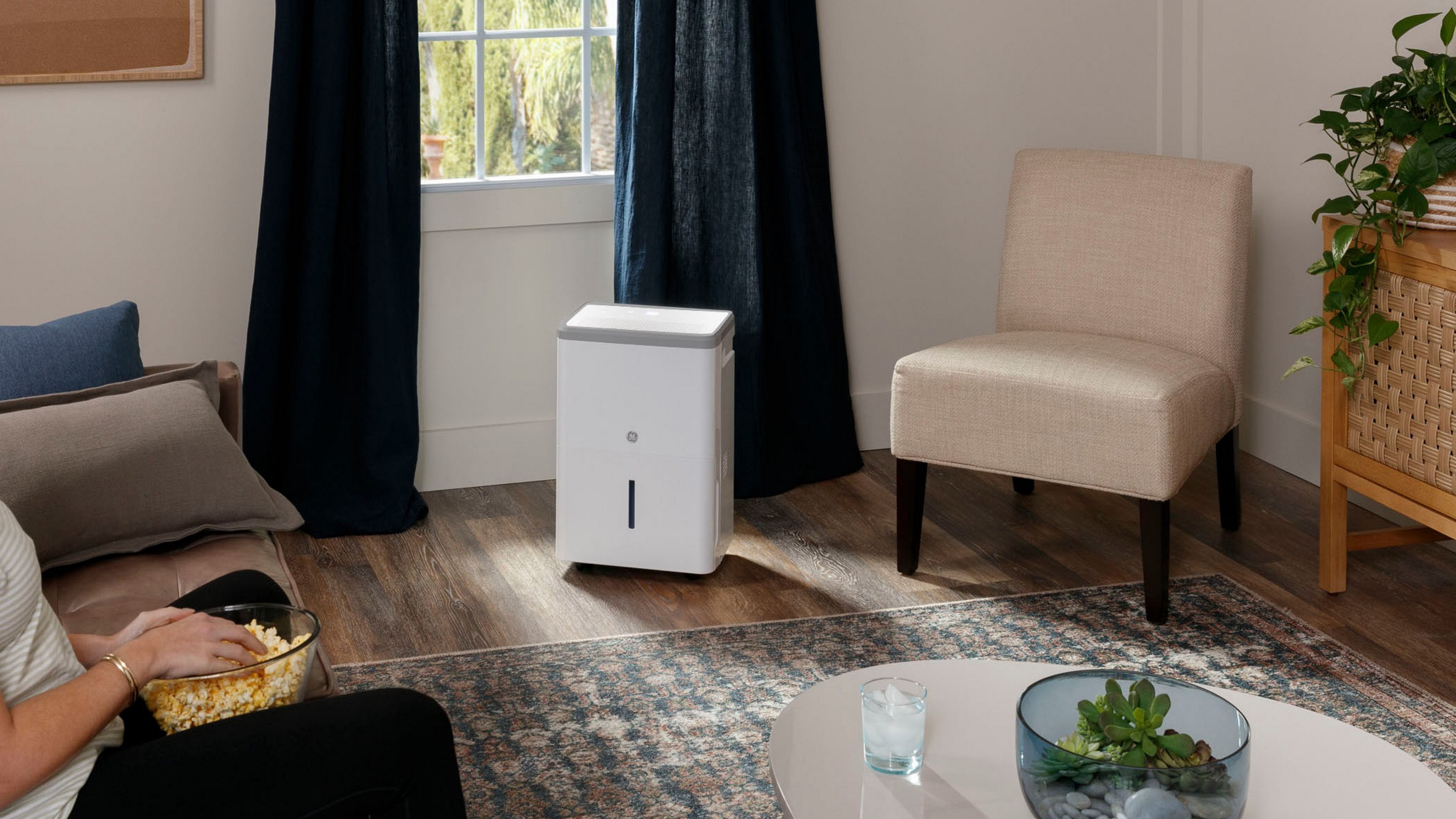How much does it cost to run a dehumidifier?
These experts help to break down the cost of running a dehumidifier


As energy bills soar, we're all looking for the best ways to save a few pennies while also being kinder to the planet. As it turns out, some appliances are a lot more costly than others - we all know it's best to only use electricity-guzzling machines like the dishwasher or tumble drier when necessary. But how much does it cost to run a dehumidifier?
For those of us who live in humid climates or homes that are prone to damp, switching off the dehumidifier might not be a simple option. In many cases, these nifty little machines are vital to making rooms feel comfortable as well as keeping mould at bay. However, it's still useful to know how much they're contributing to our electricity costs so we can adjust our spending.
Thankfully, we've conjured up some answers from experts in this field so you can gauge an idea of how much your dehumidifier is really costing you. What's more, they also have a few words of advice to help us make our dehumidifiers more energy efficient to reduce bills and save energy.
Do dehumidifiers use a lot of electricity?
To know how much it costs to run a dehumidifier, you have to first establish how much energy it uses. Despite the many benefits of dehumidifiers, they do use a lot of electricity, but this varies greatly depending on the age and model of your appliance.
'Dehumidifiers don't have to be high users of energy in your home,' explains Sarah Lavine, energy expert at Envirohome. 'Many humidifiers are now energy star certified meaning they follow strict energy performance standards set by the EPA.'
The fact is, dehumidifiers aren't the bulky, inefficient machines that they once were. Modern models are small and compact and often have eco settings which improve their energy efficiency.
'Dehumidifiers also consume proportionally to their dehumidifying capacity, so higher capacity dehumidifiers are more energy efficient,' explains Ludovic Chung-Sao, founder of ZenSoundproof.com.
The Livingetc newsletters are your inside source for what’s shaping interiors now - and what’s next. Discover trend forecasts, smart style ideas, and curated shopping inspiration that brings design to life. Subscribe today and stay ahead of the curve.
According to Ludovic, this means a 50 pint dehumidifier will typically consume around 1 kWh to remove 3.30Lof water whereas a 35 pint dehumidifier will use the same amount of energy to remove 1.80L of water.
'Manufacturers typically specify the energy efficiency in Liter per kWh on their products. So, you can deduce the kWh spent every time you empty your water bucket,' he explains.

How much does it cost per hour to run a dehumidifier?
You can check the voltage and current (amps) on the label of your dehumidifier and with a bit of simple maths, you can find out how much it costs to run. To calculate power consumption of any appliance, you have to multiply the wattage by the number of hours it is being used to find out how many kilowatts of electricity it consumes in a hour.
Of course, this figure will greatly depend on how many hours a day you use your dehumidifier. 'There are some brands that are bulkier and use more energy, but most stores are required to tell you the electrical consumption,' explains Camden Benoit, founder of Sustainably Off-Grid. 'In my experience, it costs me about 5 cents an hour to run my dehumidifier.'
Should you leave a dehumidifier on for 24 hours?
Like any appliance, dehumidifiers will cost a lot more with constant use. Not only will leaving the machine on increase your energy bill, but you'll need to clean your dehumidifier more often, and it might begin to have negative effects on your environment, too.
'I don't recommend leaving your dehumidifier on for more than 12 hours at a time,' says Camden. 'It will eventually get costly and probably make your home too dry for comfort.'
It's a good idea to use a timer plug or an inbuilt setting on the dehumidifier to limit how long it's used for. Other more modern dehumidifiers will turn off once they reach the desired humidity level percentage.
'This percentage varies from home to home, person to person, and state to state but we suggest targeting between 45 to 54 percent,' says Sarah. 'If a higher humidity level is chosen, the dehumidifier won't need to run as often leading to lower energy consumption.'
What setting is recommended?
Besides setting the desired humidity level higher, there are a few other tricks you can use to preserve energy on more modern dehumidifiers.
'Some dehumidifiers have a setting for low energy consumption which are always best to use,' Camden says. 'If not, you can turn the power to a lower setting or adjust the temperature and make it lower.'

Lilith Hudson is a freelance writer and regular contributor to Livingetc. She holds an MA in Magazine Journalism from City, University of London, and has written for various titles including Homes & Gardens, House Beautiful, Advnture, the Saturday Times Magazine, Evening Standard, DJ Mag, Metro, and The Simple Things Magazine.
Prior to going freelance, Lilith was the News and Trends Editor at Livingetc. It was a role that helped her develop a keen eye for spotting all the latest micro-trends, interior hacks, and viral decor must-haves you need in your home. With a constant ear to the ground on the design scene, she's ahead of the curve when it comes to the latest color that's sweeping interiors or the hot new style to decorate our homes.